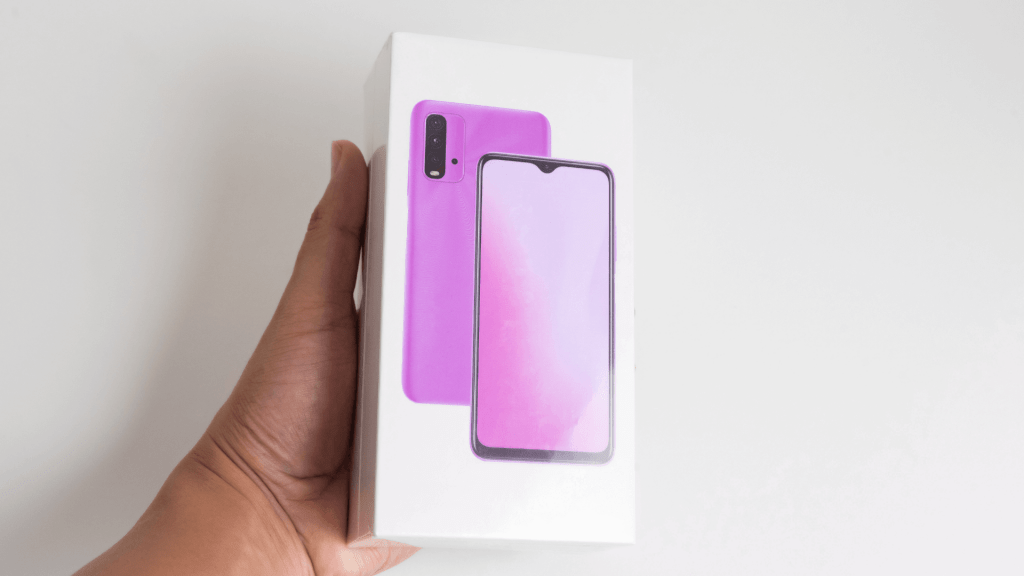Choosing the right smartphone can feel overwhelming in today’s fast-evolving tech landscape. Every year, new models hit the market boasting cutting-edge features, but many of the essentials remain constant.
Whether you’re looking to upgrade from an older model or buying your first phone, this guide covers the timeless factors to consider before making your purchase during the Easter season this year.

Contents
(i) Define Your Budget and Phone Needs
Before diving into specifications, determine your budget and primary needs. Smartphones come in a wide range of prices—from entry‐level devices that cover basic communication to high‐end models packed with premium features. Ask yourself:
- What’s my budget? Set a spending limit to help narrow your options.
- How will I use my phone? Are you mainly texting and calling, or do you rely on your device for photography, gaming, or multitasking? Knowing this upfront ensures you invest in the features that matter most to you.
Balancing price with performance is key. Sometimes, a mid‐range phone offers nearly the same functionality as a flagship model without the premium price tag.
(ii) Operating System and Software Support
Your choice of operating system—iOS or Android —can affect not only the look and feel of your smartphone but also its longevity. Here are a few points to consider:
- User Interface: iOS is known for its simplicity and smooth integration with other Apple products, whereas Android offers greater customization.
- Software Updates: Long-term support is crucial. A phone that regularly receives security patches and OS updates can keep your device running smoothly and securely for years. Look for phones that promise at least three to five years of updates.
- Ecosystem Compatibility: If you already own devices like a tablet, smartwatch, or laptop, choosing a phone that integrates seamlessly with your existing gadgets can enhance your overall experience.
(iii) Screen Size, Quality, and Durability
A smartphone’s screen display is the window to your digital world, so consider the following:
- Screen Size and Resolution: Larger screens are great for media consumption, but they might not be as pocket friendly. High-resolution displays (Full HD or better) ensure crisp images and text.
- Refresh Rate: A higher refresh rate (90Hz or 120Hz) provides smoother scrolling and an improved gaming experience.
- Durability: Look for features such as Gorilla Glass protection and water or dust resistance ratings (IP ratings). These features help ensure your phone can withstand everyday bumps and spills.
(iv) Phone Battery Life and Charging Capabilities
A phone’s battery is its lifeline. When considering battery performance, keep these factors in mind:
- Battery Capacity: Measured in milliampere-hours (mAh), a higher number generally means longer life between charges. However, battery efficiency also depends on software optimization.
- Fast Charging and Wireless Charging: Many modern phones offer fast-charging capabilities, which can give you a significant boost in a short period. Additionally, wireless charging adds convenience by letting you charge your device without cables.
- Real-World Usage: Read reviews to see how a phone’s battery performs under typical conditions—streaming video, browsing, or gaming. Theoretical mAh numbers only tell part of the story.
(v) Phone Camera Quality and Features
For many, the camera is a phone’s most important feature. Whether you’re a casual snapper or a budding photographer, consider:
- Sensor Size and Resolution: Larger sensors generally perform better in low light, while higher megapixel counts can capture more detail.
- Multiple Lenses: Many modern smartphones include wide-angle, ultrawide, and telephoto lenses. Evaluate which lens combinations suit your photography style.
- Software and AI Enhancements: Features like night mode, optical image stabilization (OIS), and AI-powered photo editing can significantly improve image quality.
- Video Capabilities: If you shoot videos frequently, look for 4K recording and advanced stabilization options.
(vi) Processor, RAM, and Storage
The internal hardware determines how smoothly your smartphone runs:
- Processor and RAM: A powerful processor and ample RAM ensure your smartphone can handle multitasking, gaming, and resource-intensive apps without lag. Look for benchmarks and reviews for real-world performance.
- Storage Options: Consider how much storage you need. Phones come with various capacities, and some offer expandable storage via microSD cards. If you plan on storing lots of photos, videos, or apps, opt for a higher capacity model or one with expansion options.
- Future-Proofing: Buying a smartphone with a bit more power than you need can help it stay relevant longer, even as app and software demands increase over time.
(vii) Build Quality and Design
A well-built mobile device not only looks good but also withstands everyday wear and tear:
- Materials: Premium phones often use glass and metal, which provide a sleek look and feel. However, these materials may be more prone to damage if dropped. Some devices balance aesthetics with durability by using reinforced plastics.
- Ergonomics: How a phone feels in your hand matters. Consider the size, weight, and how the design fits your usage habits. It’s always a good idea to hold a phone in-store before buying.
- Repairability: Phones that are easier to repair can be more cost-effective in the long run. Check if parts like the battery or screen are easily replaceable and whether the manufacturer or third parties offer repair services.
(viii) Extra Features and Connectivity
While many features come down to personal preference, a few extras can enhance your smartphone experience:
- Biometric Security: Fingerprint sensors and facial recognition provide both convenience and security.
- 5G and Wi-Fi Capabilities: Ensure the phone supports the latest network standards for faster connectivity.
- Audio and Multimedia: Consider the quality of the speakers, the inclusion of headphone jacks, and support for high-quality audio codecs if you’re an avid music listener.
- Special Modes: Some phones offer additional features like gaming modes, camera control buttons, or customizable physical buttons that can enhance usability.
Bonus Tips
- Read Reviews: Third-party reviews and user feedback provide insight into how a smartphone performs in real life.
- Try Before You Buy: If possible, visit a store to test the device firsthand.
- Consider the Ecosystem: Think about how the new phone will integrate with your existing devices and services.
- Plan for the Future: Look for features that ensure longevity—like long-term software support and a robust build—that can help your phone remain relevant for years to come.
Whether you’re drawn to the latest flagship or a well-priced midrange option, understanding what truly matters will ensure you make a smart, lasting choice.

You are now ready to get that new phone with confidence. Whether you’re drawn to the latest flagship or a well-priced midrange option, get the phone you want at Twiva.
PS: If you are looking for ways to boost your earnings and get a better phone, here are 5 Easy Ways of Making Money Online.
